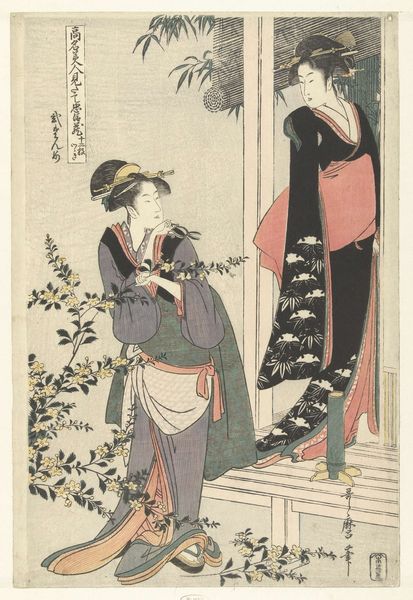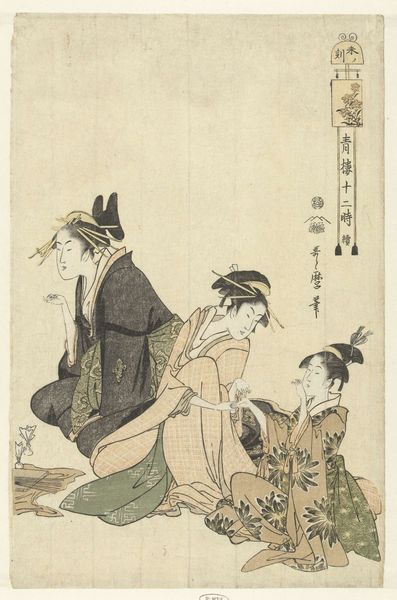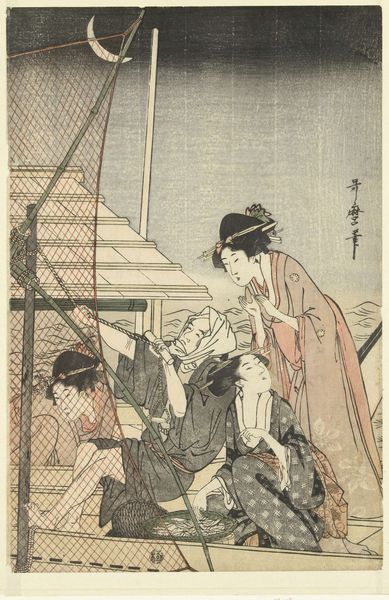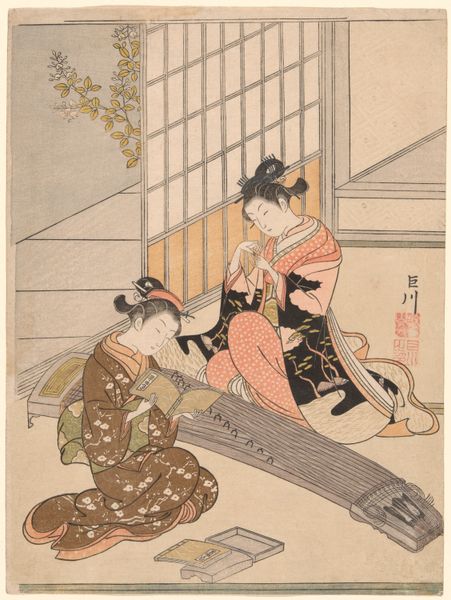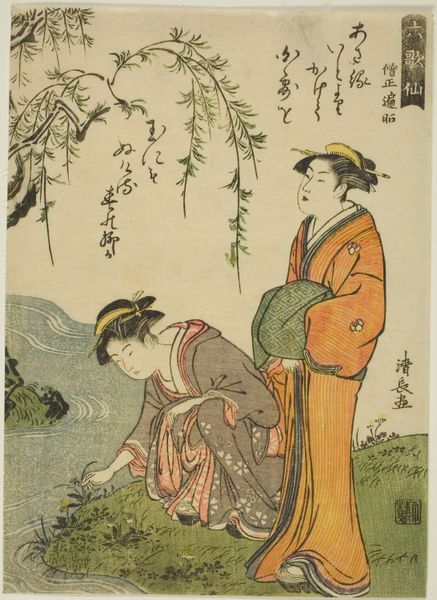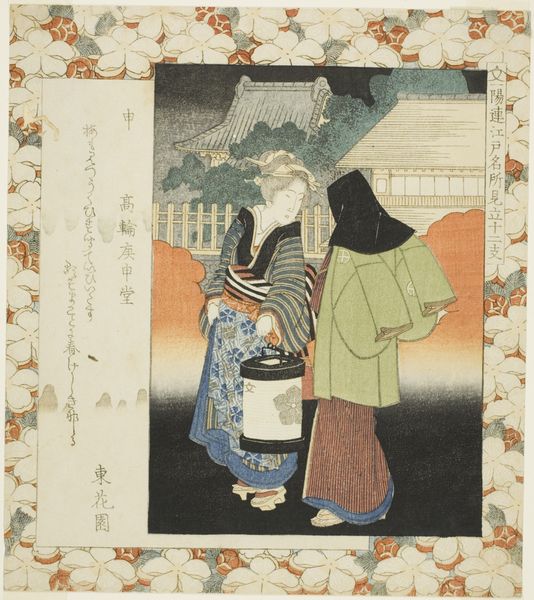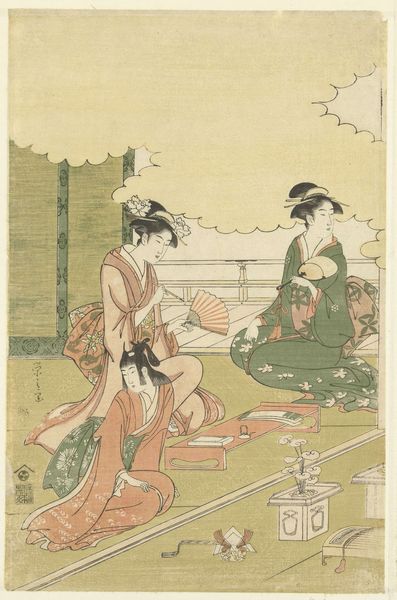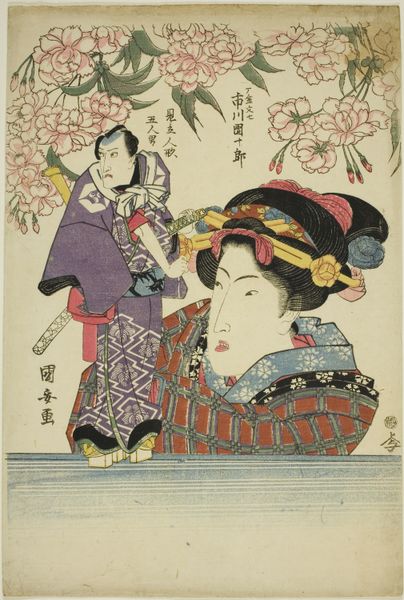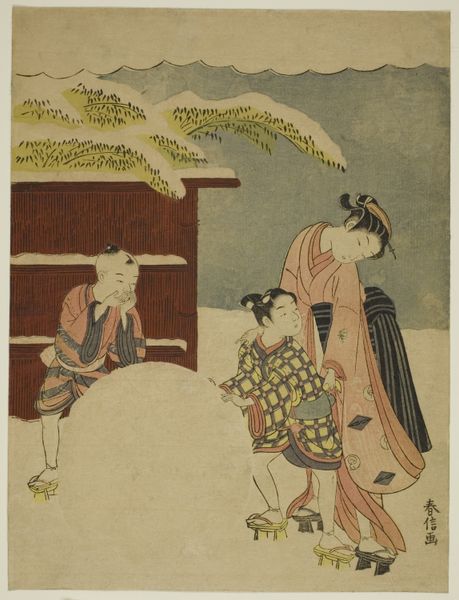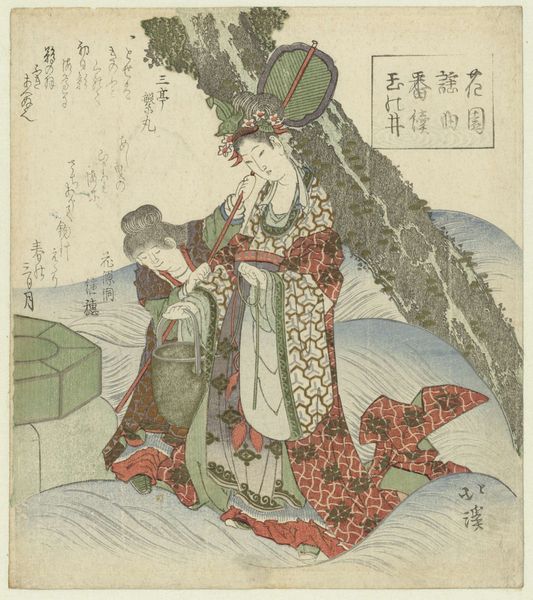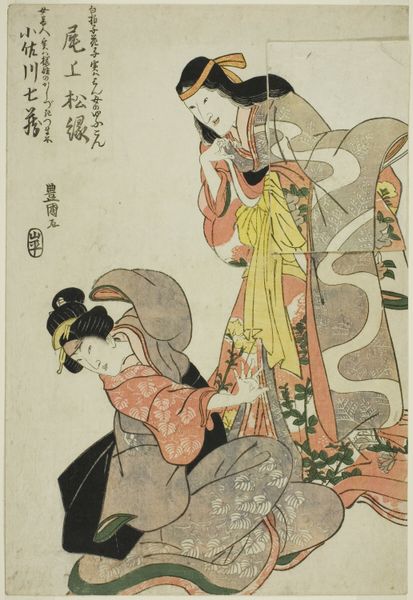
Dimensions: height 210 mm, width 185 mm
Copyright: Rijks Museum: Open Domain
Editor: This is "Echtpaar bezoekt Enoshima" or "Couple visiting Enoshima," a Japanese print by Totoya Hokkei from around 1890 to 1900. The scene feels both intimate and expansive, and I'm curious how we should read this juxtaposition. What stands out to you in this work? Curator: Immediately, I’m drawn to the encoding of gender and class within this landscape. Consider the woman: Her elaborate kimono, her upright posture, her physical relationship to the walking stick. It all speaks to a specific societal position, doesn't it? Editor: Definitely. It's interesting how the landscape becomes a backdrop that highlights her status. What about the male figure? He's pointing something out. Curator: Yes, and note his attire too. It signifies a different relationship to both leisure and labor, especially alongside the sword which might further mark the social standing, not to mention the implicit gendering of looking that seems to be enacted. Do you think their visit is simply a leisurely excursion, or does it suggest something more complex, perhaps touching upon ritual or tradition? Editor: That’s a good point. It makes me reconsider the setting as not just a pretty scene, but as a site of specific cultural significance. Curator: Precisely. Enoshima itself, being a sacred island associated with Benzaiten, the goddess of wealth, music, and eloquence. How does situating this work within the narrative of pilgrimage reshape how we perceive gender roles, performance, and visibility for that time? Editor: I hadn't considered that, but now that you mention it, it reframes the whole image. What first seemed like a simple day trip becomes a performance of cultural values and class dynamics. Curator: And perhaps challenges us to reflect on how we, as viewers, are implicated in these acts of looking and interpreting. Editor: Exactly! This has really changed how I initially viewed this print; now I'm much more aware of its deeper layers. Curator: And that's precisely the power of contextualizing art within its historical and social fabric, wouldn’t you say?
Comments
No comments
Be the first to comment and join the conversation on the ultimate creative platform.

